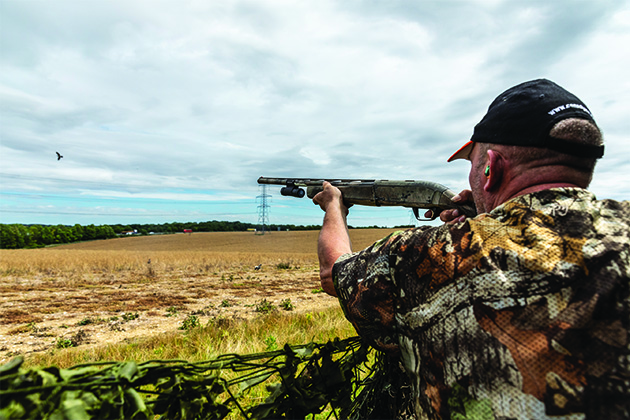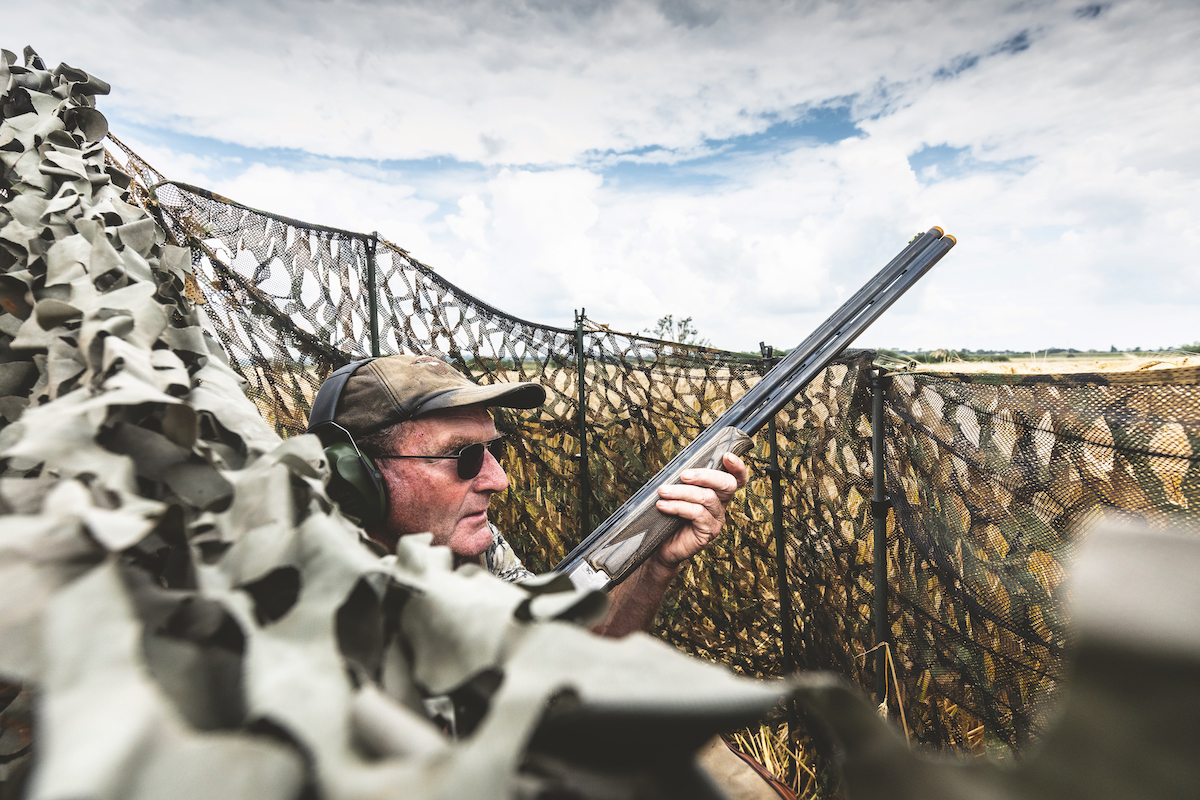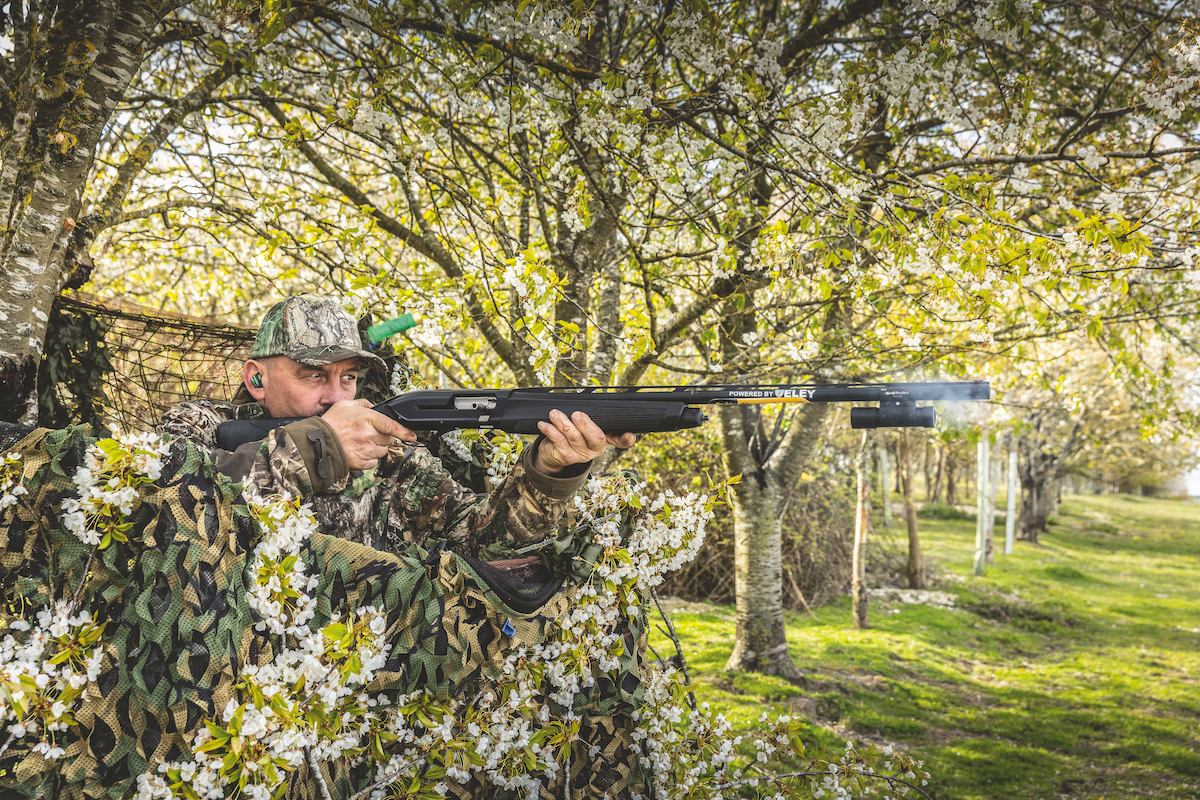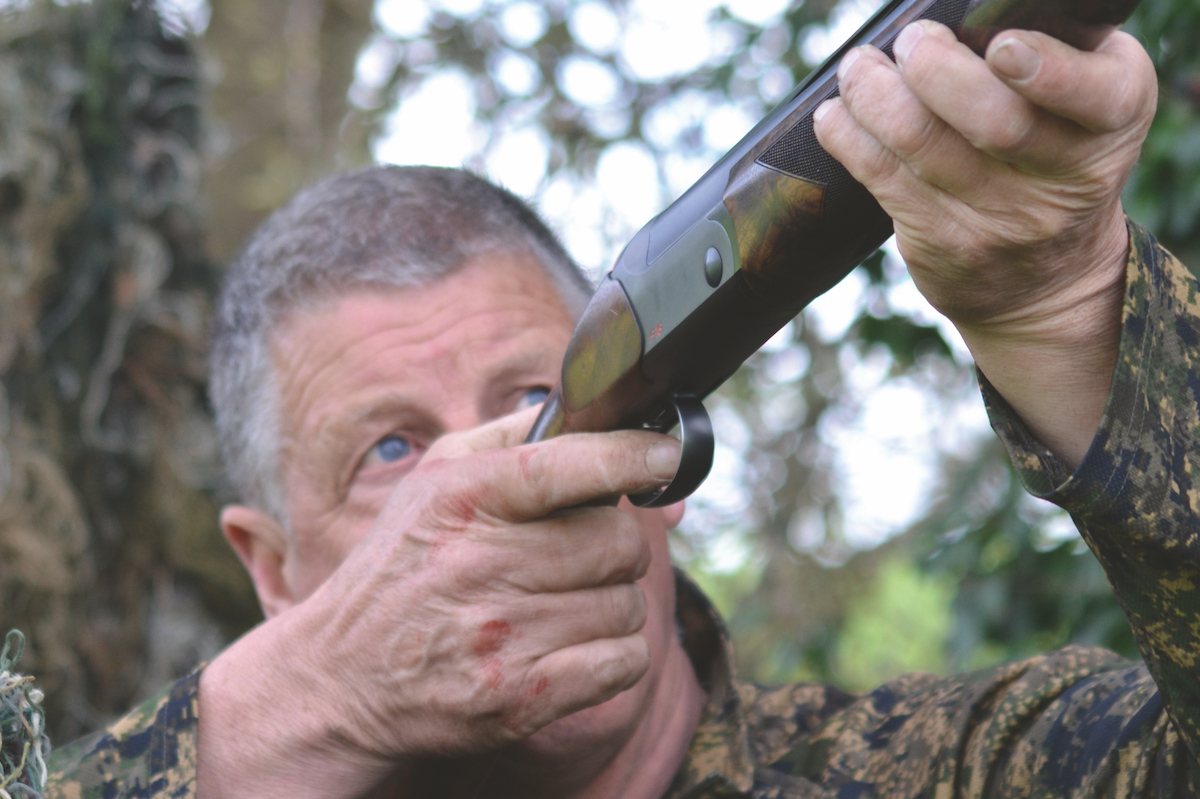Tricky pigeon shooting shots: Geoff Garrod explains how to deal with them
Geoff Garrod talks about a quartet of tricky shots that decoyers will typically encounter in the field

Shooting down over a crop can be tricky as it is a deceptive shot
I am frequently asked about how to deal with certain tricky pigeon shooting shots that decoyers find difficult. There are some types of shot that always come up and the answer is not straightforward, as local conditions and the situation of your hide can vary on any given day. Many things can come into play – the wind, the position of the hide and different backgrounds can all deceive the shooter. That’s the joy of the sport, though, its unpredictability. (Read Geoff’s piece on pigeon shooting accessories – what you really need.)
Sometimes you’ll be left with no alternative but to set your hide up with the wind directly in your face. It’s never the best option, but the location may leave you no choice. This can make for some tricky pigeon shooting shots as birds will probably arrive at your hide and decoy pattern from behind you, or try to slide into the pattern arriving from a line close to the hedgerow. This makes life harder not only because you’ll have far less time to spot birds approaching, but they will also be sliding in the wind as they descend.
In these situations I always keep the decoys as close in as possible. If your furthest decoy is 35m away and a bird sees that decoy first and tries to land five or 10m further out, you’ve made your shot far harder than if you had the furthest decoy at, say, 20m. Play the odds and do everything you can to get the birds to decoy as close to you as possible.

You are sometimes limited as to where you can set your pattern
How the bird arrives
If a bird arrives from directly behind you and it’s a fairly easy shot, simply bring your gun up to the target, block it out and squeeze the trigger. If it arrives from, say, the right and is sliding into your pattern, you’ll have to give this target some lead on the left. Vice versa for left to right. They tend to not be flying too fast if they’ve committed to land and it’s easy to give them too much lead and shoot over the top of them.
Visualising a clock face on a right-to-left bird, shoot at about seven o’clock. Ensuring you get the line right and get under the bird is the hardest part and there is little time to make these decisions. Experience will help gain sight pictures but remember, left-to-right birds shoot up the right, the opposite for right-to-left, and stay below the bird.

Decoyers will face some tricky shots, but that’s part of the joy of the sport
Second chance
You’ll often have a chance at a right-and-left with pigeons and the second bird of the pair is always the hardest. Choosing sensibly which bird to take first will increase your chances of success. The key here is to not go for the closest and ‘easiest’ bird.
Pick a bird that is further from you but in range, and allow the nearest and most tempting pigeon to commit itself to landing. The closer and slower this bird is going when you get to take your shot, the better your chances. The first shot will be slightly harder and the second will be slightly easier, but there is no bird harder to hit than a spooked pigeon in the wind that is flying away from you.
Pigeons are incredibly agile and can change direction in a split second. So as the second bird is reacting to the shot you’ve just taken at the bird behind it, it will do all it can to turn, pick up speed and get the hell out of there. This is a tricky shot and can be hard to read. Most times the bird will be climbing and again it makes it an easy target to miss underneath.
In the split second you have to get a bead on it, you need to get the line right and decide if the bird is going left to right or right to left and how fast it is climbing. On a right-to-left climbing bird you’ll need to shoot at 10 or 11 o’clock.
Down time
Sometimes I end up setting my hide on top of banks, looking down on to the crop I’m protecting. This is a shot that you’ll rarely have practised, even at a clay ground. It’s a deceptive shot because we’re not used to shooting at targets below our feet and the background of a crop rather than sky means that speed and distance are harder to judge. This is similar to the way rabbit clays seem to be going faster than they are and look further away. Technique is key to this shot, and don’t be tempted to rush. As you are looking down on the target, remember the clock face. A bird coming to your decoys from across the field 45 degrees to your right will need lead at about seven to eight o’clock.
It’s easy to stab at these targets. Track the bird then pull ahead with a smooth swing and follow through. It’s easy to pull too far in front and have a jerky swing or, worse still, stop the gun after passing the target. Keep it smooth.
Rule the roost
You’ll be shooting at birds 10m to 15m above the canopy of the wood you’re in. As you head to the wood, spend a moment to work out roughly the height of the trees and get that focused in your head; it’s far harder to judge the tree heights when you’re in among them.
Again, you’ll have very little time to read the line, speed and height of a bird, and you’ll probably only have a few clear gaps in the trees to spot birds. The key is to blank out the trees in your mind. Keep the gun swinging and don’t try to time your shot to coincide with a gap. You simply need to swing through the bird and squeeze the trigger and hope that enough pellets will get through to hit the bird. It won’t always work, but nobody goes roost shooting and expects to uphold their average shot-to-kill ratio.








